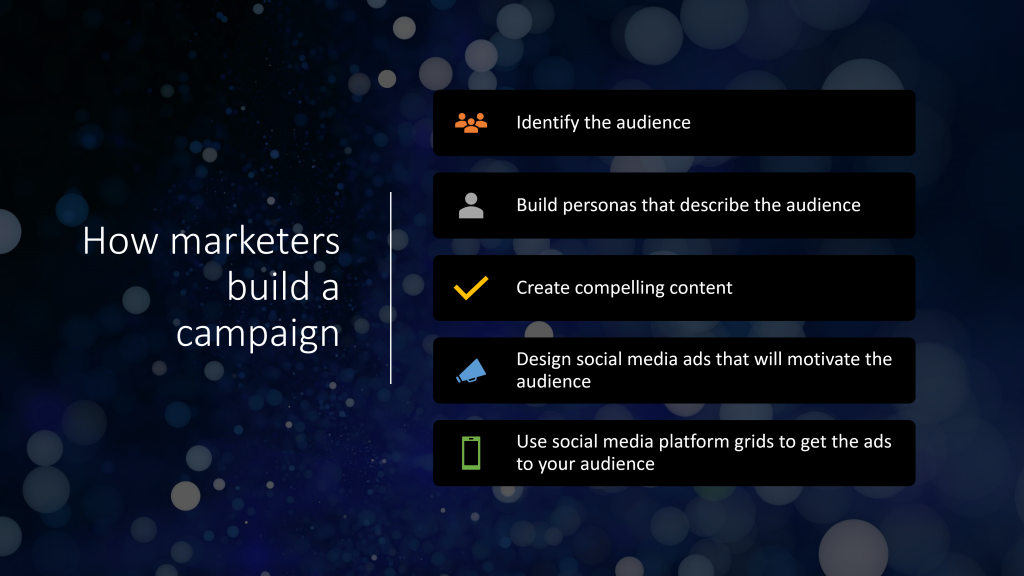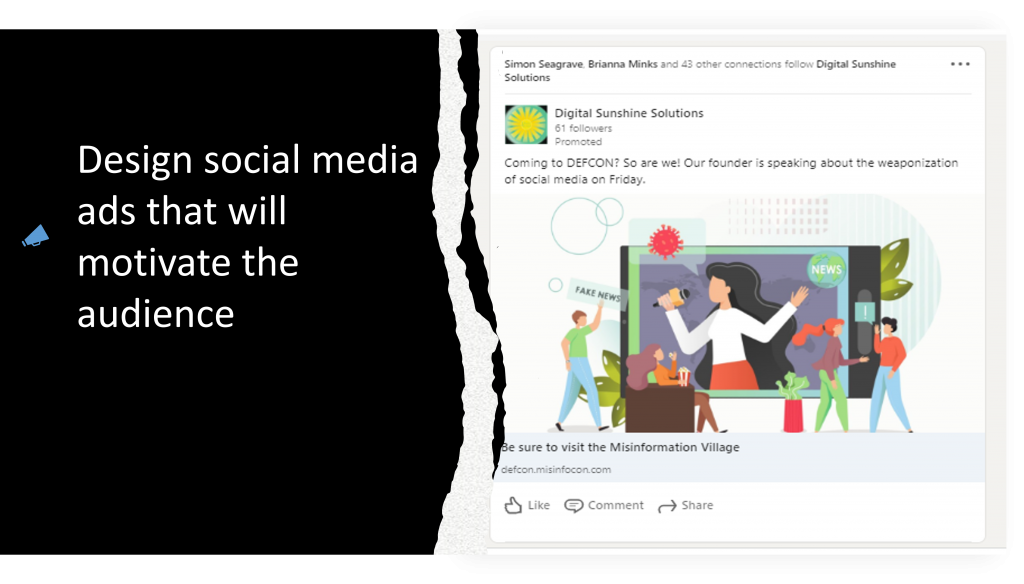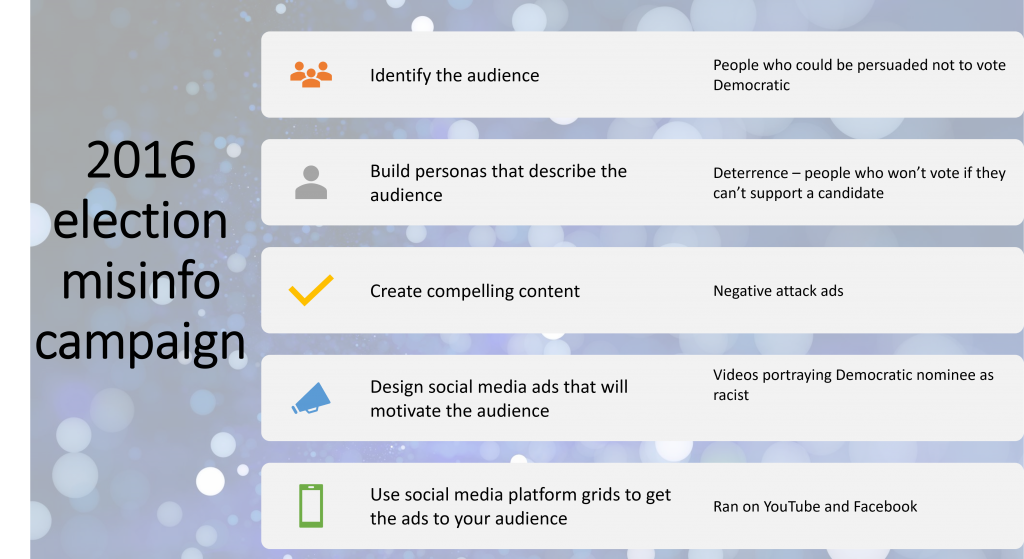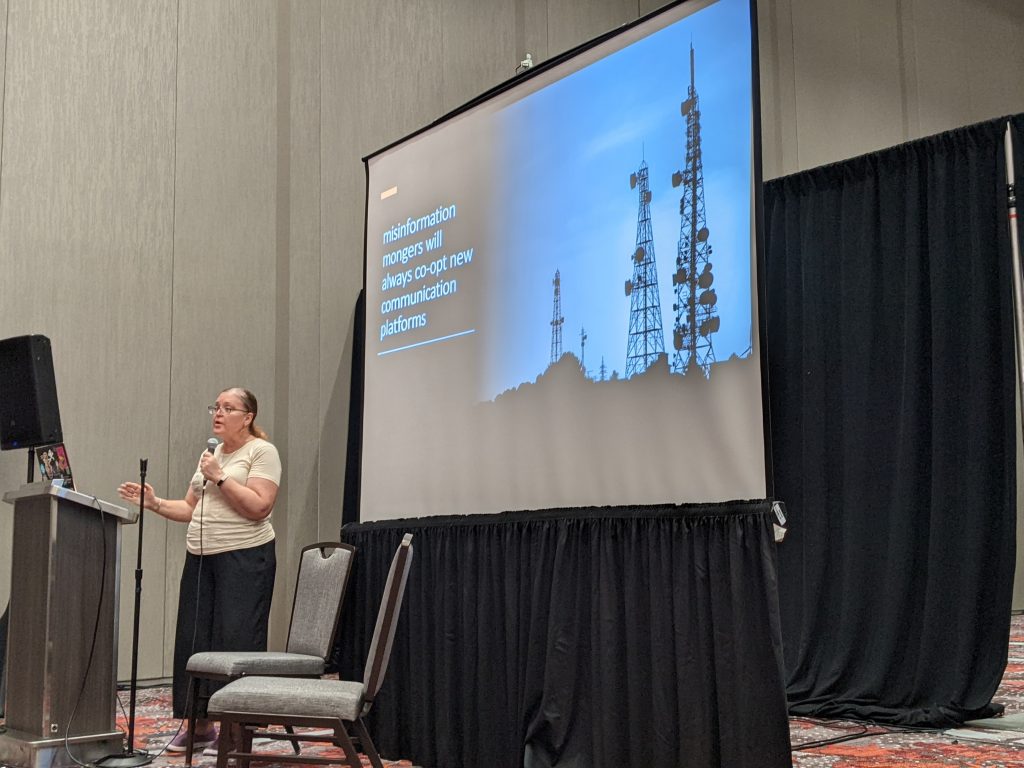Last week, I did something I never thought I’d do. I spoke at DEFCON! I presented a longer version of this misinformation post that I developed from a talk I gave at Bitnorth over a decade ago. The title of this talk was “The History of the Weaponization of Social Media”. Dramatic, I know. But I am a marketer – and you need to fight fire with fire. You can find the slides at the end of this post. For now, let’s cover the high points of how weaponized social media became a tool for misinformation.
Misinformation brokers are expert marketers.
People who peddle misinformation figured out a long time ago that new communications tools are excellent ways to spread their messages to other people. In fact, even the 1st newspaper in the US colonies carried misinformation (about French king Louis XIV). Pamphlets made it easy to get the message out to anyone walking by. Later, one of the first films (still one of the most talked about technical films) retold the story of American Reconstruction and flamed the flames that revived the Ku Klux Klan.
There was no doubt misinformation brokers would weaponize social media.
Early days: Social media put messaging into the hands of the people
In the beginning, social media platforms merely connected people. But for those of us who were a little more technical, we could share our ideas with the world with blogs, videos, and images.
It was an amazing time, because PR and marketing professionals didn’t yet understand the power of these tools. I can remember taking screenshots of tweets threads to put into PowerPoint presentations for my executives, so they could understand what customers and competitors were doing on Twitter, and how we were able to turn things around.
The only problem was these tools were also in the hands of misinformation brokers to spread their messages. One example is right-wing blogger Andrew Breitbart. Now Breitbart and others like him had a vehicle to spread misinformation with doctored videos as proof. Since people didn’t understand the tools, there weren’t many people who could challenge them. It was the perfect storm in which to weaponize social media.
Social media becomes a universal communications tool
Since mobile phones became ubiquitous, social media tools became easier and easier to use. This made everyone a content creator! And provided lots of easy content for misinformation brokers. But, how did these companies provide these cool content creation platforms for free?
However, we all know there is no free lunch. Around 2012, social media platforms began to create grids. This allowed them to offer marketers access to all of their users. So no longer did marketers need to worry about posting social media content and just *hoping* they got into a user’s stream. Now they could directly and very precisely target potential customers.
Of course, it wasn’t just open to marketers. Misinformation brokers also use these grids to create their weaponize social media campaigns.
Sidebar: How do you make a marketing campaign?
There’s a science to marketing campaigns, and luckily that also means there is a formula:
- Identify your audience: Who are you trying to influence?
- Build a persona to describe the audience: Be as descriptive as possible: job title, interests, group memberships, age, gender, location, etc.
- Create compelling content: digital ads should link to content that will fill an information need.
- Design ads that work on emotional appeal, to motivate that audience.
- Use the best social media platform so the grid can help you zero in on the right audience.
This is the basic recipe I use when I help my clients build campaigns. But, misinformation brokers use these tactics as well.

Example: My DEFCON Misinformation Village ad
To begin with, I created an ad just to see if I could target people that may be interested in hearing my talk. It is linked to the Misinformation Village website (my content).

I made a target audience based on the other speakers’ profiles.

I got pretty good results in 2 days for $300.00.
Imagine what a well-funded misinformation broker could do with more time and money.

Cambridge Analytica, weaponized social media, and the 2016 election
You don’t have to imagine what people could do with more time and money. Just before the 2016 election, Cambridge Analytica unethically procured lots of Facebook user profiles, giving them a way to game the grid. Their goal: find everyone they could who could be persuaded not to vote for the Democratic nominee. One specific persona was based on “deterrence”, in other words, people who would not vote at all if they could not bring themselves to vote Democratic.
They followed a pretty basic marketing campaign plan.

Even though other parties had used social media for campaigns in the past (Obama executed this brilliantly in his first election), this was different. This was actively targeting people who could be persuaded not to vote, creating misleading content to activate their emotions and keep them away from the polls. This is why it is called weaponized social media.
Not surprisingly, it worked. 2 Million black voters who came out for Obama didn’t vote at all in 2016.
What can be done to stop misinformation brokers?
Misinformation brokers will always be first adopters of new communication media. They can’t be stopped, but digital literacy can be used to make their methods less effective.

If something you see on social media makes you feel like this, it could be part of a misinformation campaign. Remember, these folks are great marketers, and know what to put in their content to get an emotional reaction from you. Take a breath – step away from the computer!

Remember you were probably specifically targeted, so the worst thing you can do is to spread the rage. That’s what misinformation agents are counting on! Some other tips:
- Don’t argue with a bot, or with someone paid to cut and paste troll-like responses from a campaign spreadsheet.
- Hack their messaging! Google the phrase that got you upset. If it shows up in other social media platforms, videos, or news content, congratulations. You’ve been the target of a weaponized social media misinformation campaign.
- Get off the internet. Humans are not built for 24×7 news cycles. We have had enough legitimate bad news over the last 3 years, we don’t need to subject ourselves to misinformation content as well. Have real conversations with your family, friends, neighbors, and community members.
Let’s get real
It was a real honor to speak in the Misinformation Village, and I really hope they will have me back. It was a little intimidating to be there with so many academics, but I’ve been practicing this for quite a long time. I think it was great they included industry as well.
My slides are below. Weaponized social media is not a topic that will fade away anytime soon. I would love to hear from you about this topic!



